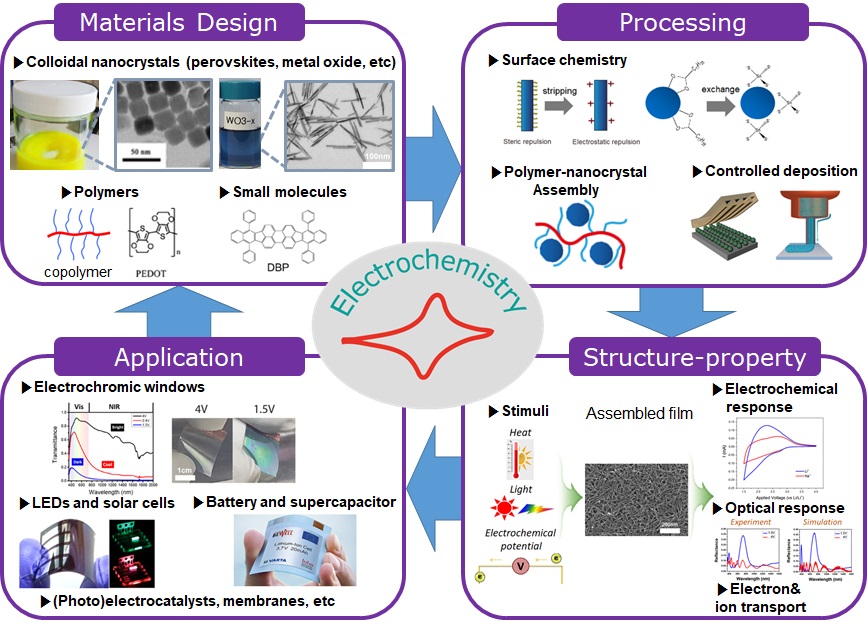


Electrochemical Energy
Materials Laboratory (EEML) aims to tackle energy
and environmental issues by effectively utilizing electrochemistry and
inorganic nanocrystals. One of fascinating feature of colloidal nanocrystals is
fine-tuning of optical and electrical properties from the control of size,
shape, doping, and crystal phase. Starting from these materials, we maximize
those properties by employing organic materials, surface chemistry, assembly,
and processing. Dynamic response of assembled thin films under various stimuli
(light, heat, electrochemical potential, etc) will guide the design rules for
the devices. Through the aforementioned studies, our group aims to develop next-generation
energy devices that can have a profound impact on human society.
1)
Materials Design
As a basic component comprising the devices, material itself is the
most important parameter to achieve high performance devices. Especially, we
are interested in colloidal nanocrystals (metal oxide, halogen perovskite, etc)
of absorption and emission properties in the visible and near-infrared range.
Those properties can be enhanced when the nanocrystals are combined with organic
materials (polymers and small molecules).
2)
Processing
The properties of nanocrystal ensemble are different with that of
single nanocrystal. Optical, physical, and electrochemical properties of
nanocrystals are very different depending on their assembly and arrangement.
For example, in the case of plasmonic metal oxide nanocrystals, optical and
electrical properties of thin films vary depending on the orientation of
nanocrystals due to the coexistence of shape and crystalline anisotropy.
Therefore, we aim to control the processing by utilizing the surface chemistry,
nanocrystal-polymer assembly, and various deposition techniques. These
well-defined nanocrystal films and structures obtained therefrom make it
possible to study the structure-property correlation.
3)
Structure-property Relationship
Properties of nanocrystal ensemble are to be studied before the
device application. Correlation between structure and electrochemical
properties, electron and ion transport in thin films will be analyzed by
studying the response of the assembled thin film and nanocrystal array under
external stimuli (light, heat, electricity, and etc). This will lay the
foundation for enhancing the performance of next-generation thin film devices.
4)
Applications
Nanocrystals are useful for developing next-generation flexible
optoelectronic and electrochemical devices. One of our main application field
is developing high-performance next-generation electrochromic windows. We are also
interested in other energy and environmental applications such as:
- Next-generation electrochromic
windows
- (Photo)electrocatalyst
- LEDs and solar cells
- Seperation membranes
- Battery and supercapacitors